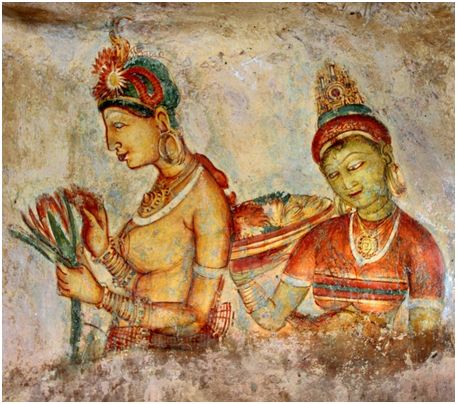मी १९७५साली दहावी झालो म्हणजे महाराष्ट्रातील नवीन अभ्यासक्रमाच्या पहिल्या बॅच चा विद्यार्थी. १९६६ला पहिली झालो. त्याकाळात वेगवेगळ्या शाळांत वेगवेगळी पाठयपुस्तके वापरली जात असत आणि त्यांचे वैशिष्ट्य म्हणजे ती सगळी अतिशय सुमार पद्धतीने छापलेली असत.
त्याला सुमार म्हणणे आता शक्य आहे कारण त्यांच्या पाठीमागून नयनमनोहर
बालभारती आली...जी ह्या वर्षी
पन्नास वर्षांची झाली आहे.
मी स्वतः बालभारती पुस्तके वापरण्याच्या आधी त्यांचा परिचय माझ्या धाकट्या भावंडांमुळे १९७१ सालीच झाला. माझी बहीण दुसरीत असताना. मी तिचे पुस्तक (बऱ्याचवेळा हिसकावून!) घेऊन मोठमोठ्याने वाचत असे. मला मजा वाटे. रंगीत चित्रे पण छान वाटत.
सौजन्य : बालभारती, मराठी, पुस्तक दुसरे , 'संत एकनाथ', १९६९/१९७८*
मला आठवते, पाचवीत १९६९ साली माझे तिसरी भाषा म्हणून इंग्लिश शिकायचे काम त्या पाठयपुस्तकामुळे अतिशय अप्रिय झाले होते. आणि तर्खडकर मालेची पुस्तके तर अतिशय विद्रुप दिसत. बालभारतीने या सगळयाचा कायापालट केला.
मला पहिले बालभारतीने छापलेले पुस्तक अभ्रासक्रमात पहिल्यांदा केंव्हा वापरायला मिळाले ते आठवत नाही. पण माझ्या कायम स्मरणात राहिलेली पुस्तके म्हणजे बालभारतीची ९वीची बीजगणित, भूमिती आणि भूगोलाची पुस्तके. मिरजेला नवीन सुरु झालेल्या पुस्तकांच्या दुकानात, १९७३ साली, जे छापून उशिरा उपलब्ध झाले होते ते भूगोलाचे पुस्तक तर जोगळेकर-क्लास मधल्या एखाद्या सुंदर मुलीसारखे वाटले होते!
हे सगळे जरी खरे असले तरी, बालभारतीने आपल्या घोकंपट्टी शिक्षणपद्धतीत (Rote learning) काही
बदल धडवून आणला असे मला अजिबात वाटत नाही. मुलांनी स्वतंत्र आणि वेगळा विचार
केला पाहिजे याला बालभारती पुस्तकांकडून काही मदत झालीय असेही वाटत नाही.
भाषांची आणि इतिहासाची पुस्तके तर अलीकडे विचारसरणींचे आखाडे झाल्या सारखे वाटतात. वर्तमानातील योग्यायोग्यतेचे निकष इतिहासातील व्यक्तींना, लेखकांना, साहित्यकृतींना पाठयपुस्तकातील निवडीसाठी लावण्यात येतात.
दुसरी एक खेदाची गोष्ट या ठिकाणी लिहावीशी वाटते.
मी अनेक जातींच्या, धर्मांच्या शिक्षकांची आणि विद्यार्थ्यांची उज्ज्वल परंपरा असलेल्या, कै. वासुदेव शास्त्री खरेंसारखा शिक्षक एकेकाळी लाभलेल्या, मिरज हायस्कूल मध्ये १९६९ सालापासून (पाचवी पासून) शिकत होतो. ती शाळा त्यापुढील दोन-तीन वर्षात सांगली एज्युकेशन सोसायटी कडून मिरज नगरपालिकेकडे चालवायला आली. त्यासाठी छोटे आंदोलन पण झाले होते. तो बदल का करण्यात आला हे मला अजून समजलेले नाही.
पण त्यानंतर माझ्या मते शाळेतील शिक्षकांचा आणि सोयी सुविधांचा दर्जा घसरत गेला. एक दोन शिक्षक तर उघडपणे ब्राह्मणद्वेष्टे आणि त्यापेक्षा वाईट म्हणजे शिकवायला सुमार होते. म्हणजे पाठयपुस्तकांचा दर्जा उंचावत होता पण शिक्षणाचा दर्जा घसरत होता. 'बालभारती' बरोबर ही गोष्ट माझ्या मनात निगडित आहे. वर उल्लेखलेल्या ९वीच्या गणिताच्या देखण्या पाठयपुस्तकांना न्याय दिला, माझ्या पुरता तरी, आमच्या खाजगी शिकवणीचे शिक्षक कै. श्रीधर जोगळेकर-सरांनी.
आम्ही बालभारतीच्या 'किशोर' मासिकाची वर्गणी ते सुरु झाल्या वर्षी लगेच भरली. पण एखाद-दोन वर्षांनंतर त्याचा कंटाळा येऊ लागला. चांदोबा, इंद्रजाल कॉमिक्स- वेताळ, मँड्रेक, फ्लॅश गॉर्डन, २५-५०-७५ पैशांची गोष्टींची पुस्तके, नारायण धारप यांच्या भयकथा (horror), एस एम काशीकर/गुरुनाथ नाईक यांच्या डिटेक्टिव्ह कादंबऱ्या, कुमार मासिक, भैय्यासाहेब ओंकारानी एकेकाळी काढलेले नाथमाधवांच्या वीरधवल किंवा एच जी वेल्सच्या 'टाइम मशीन' चे कॉमिक्स, ना धों ताम्हनकरांची पुस्तके, एरिक मारिया रिमार्क, माझ्या वडलांची पुस्तके, मराठीत अनुवादलेले पेरी मेसन/ शेरलॉक होम्स... यांची जादू 'किशोर' मध्ये नव्हती. ते मला हळूहळू सुधारणावाद्यांचे उत्तम छापलेले मुखपत्र वाटू लागले.
(* बालभारती च्या वेबसाईट वरील
खालील निवेदन अतिशय स्वागतार्ह आहे:
"Copyright Policy
Material featured on this portal may be reproduced free of
charge in any format or media without requiring specific permission.
This is subject to the material being reproduced accurately and not
being used in a derogatory manner or in a misleading context. Where the
material is being published or issued to others, the source must be
prominently acknowledged. However, the permission to reproduce this
material does not extend to any material on this site which is
identified as being the copyright of the third party. Authorisation to
reproduce such material is obtained from the copyright holders
concerned." )














